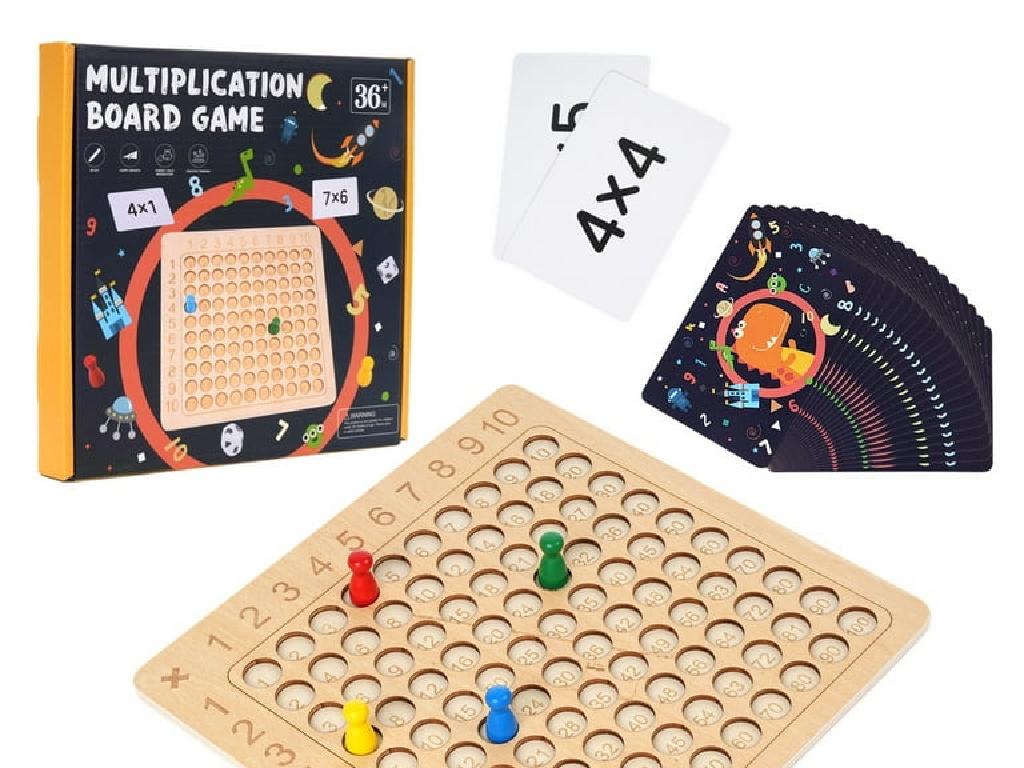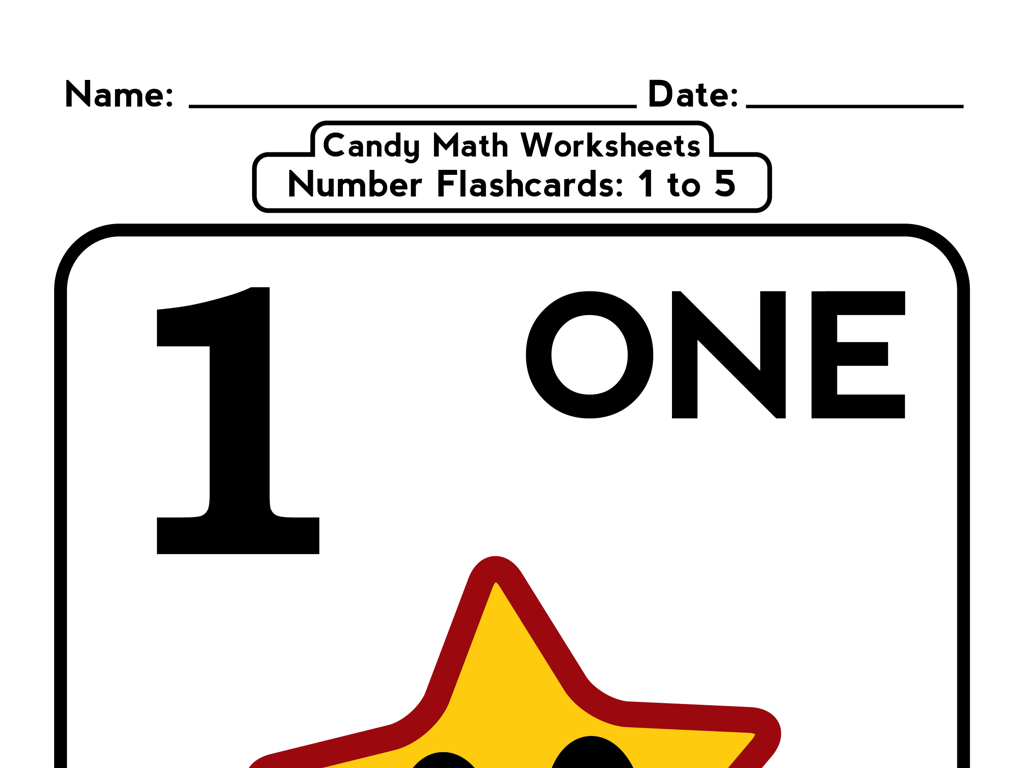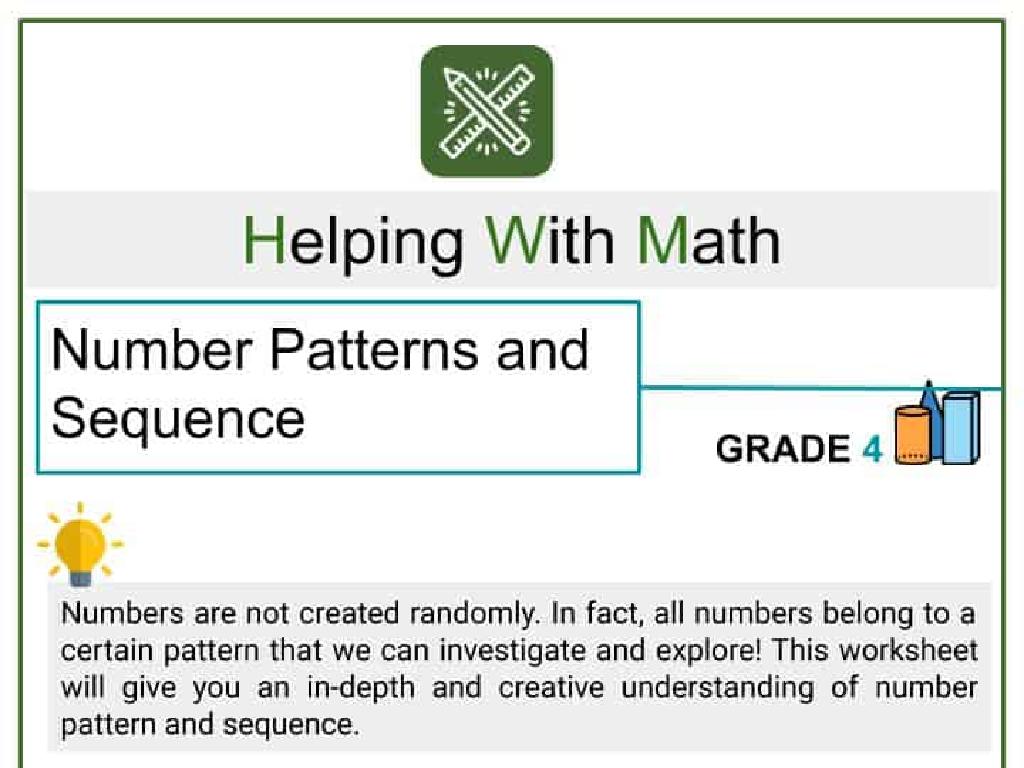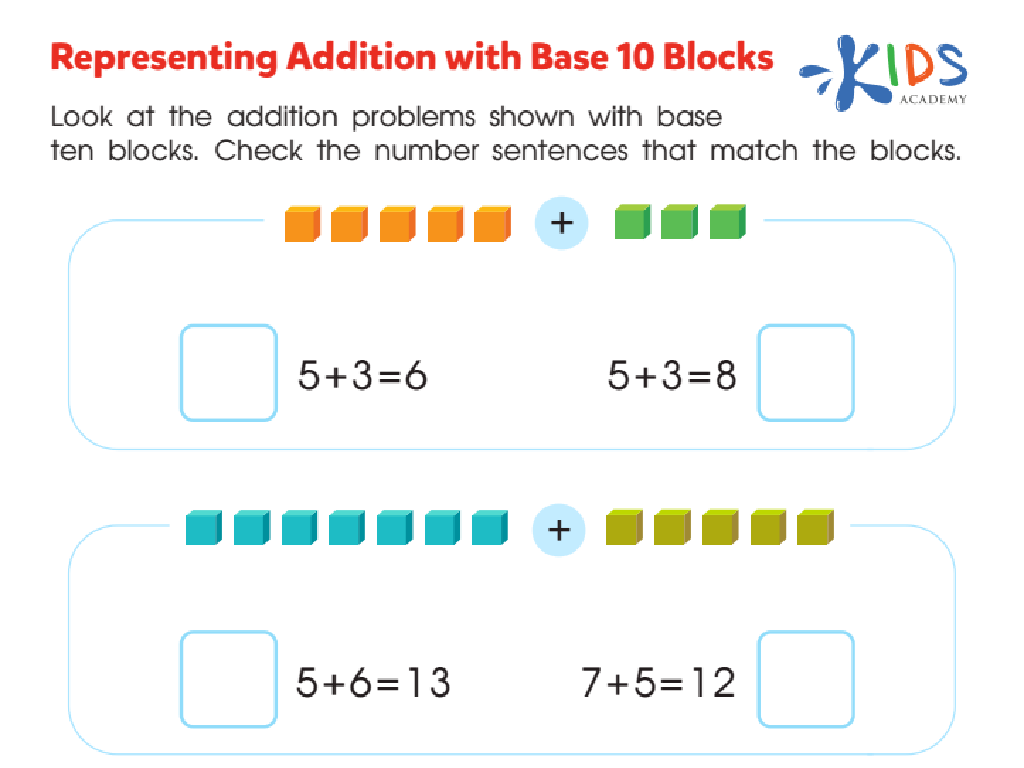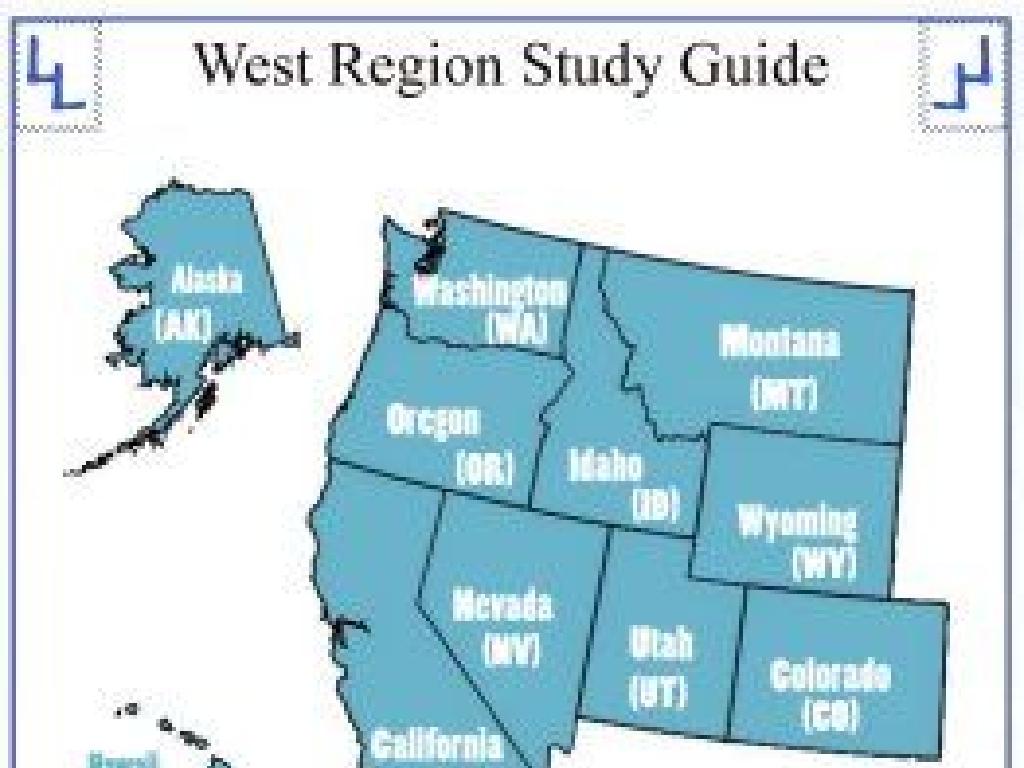Take Away Cubes - Numbers Up To 10
Subject: Math
Grade: Kindergarten
Topic: Understand Subtraction Up To 10
Please LOG IN to download the presentation. Access is available to registered users only.
View More Content
Learning Subtraction with Cubes!
– Subtraction means taking away
– Start with a number of cubes
– If you have 10 cubes, that’s your starting number
– Take some cubes away
– Maybe take away 2 cubes and count what’s left
– See how many cubes are left
– After taking away, count the cubes to find the answer
|
This slide introduces the concept of subtraction to Kindergarten students using a hands-on approach with cubes. Start by explaining that subtraction is simply the process of taking some items away from a larger group. Show them a group of cubes and explain that we will take some away to see how many we have left. This visual and tactile method helps young learners grasp the concept of subtraction by physically removing objects and counting the remaining ones. Encourage the students to participate by asking them how many cubes they think will be left if we take a certain number away. This interactive approach will help solidify their understanding of basic subtraction.
Understanding Subtraction: Take Away Cubes
– Subtraction means taking away
– Like removing cubes from a pile
– It shows how many are left
– If you have 5 blocks and take away 2, only 3 are left
– Imagine 10 cookies
– You start with 10 yummy cookies
– Eating cookies is subtraction
– If you eat 2 cookies, you subtract 2 from 10 and have 8 left
|
This slide introduces the concept of subtraction to Kindergarten students using a relatable example of cookies. Subtraction is explained as the process of taking away from a total amount and finding out what remains. Use physical props like cubes or cookies to visually demonstrate subtraction. For instance, show 10 cubes, remove some, and count the remaining cubes with the students. This hands-on activity will help them understand the concept of ‘taking away’ in a tangible way. Encourage the students to think of other examples where they have experienced ‘taking away’ in their daily lives.
Let’s Count Cubes!
– Start with 10 colorful cubes
– Count each cube together
– Practice counting: 1, 2, 3, …, 10
– Always begin counting at 1
– Understand we have 10 in total
– Reinforces the concept of quantity
|
This slide is designed to introduce kindergarteners to the concept of counting and quantity using tangible objects like cubes. Begin the lesson by showing the students 10 cubes and counting them aloud together, ensuring to emphasize the starting point of 1. This activity helps students to visually and physically understand the number 10, setting the foundation for subtraction. It’s crucial to make the counting process interactive and engaging. Encourage the students to touch and count the cubes along with you. After counting, reinforce the idea that they have a total of 10 cubes, which they will use in the following activities to learn subtraction.
Take Away Cubes: Learning Subtraction
– Start with a number of cubes
– Take 2 cubes away
– If we have 5 cubes and take away 2, how many are left?
– Count the cubes left
– After taking away, we count the remaining cubes together
– ‘Taking away’ means subtracting
– Subtraction is when we take away some and see what’s left
|
This slide introduces the concept of subtraction to Kindergarten students using a tangible method of ‘taking away’ cubes. Start with a simple number of cubes, like 5 or 10, and physically remove 2 cubes while the class watches. Then, count the remaining cubes aloud with the class to reinforce the concept of subtraction. Explain that ‘taking away’ is the same as subtracting, and this is how we find out how many are left. Encourage the students to use their fingers or other classroom objects to practice this concept. The goal is to make subtraction a concrete and understandable process for young learners.
Subtraction with Cubes: Taking Away
– Start with 10 cubes
– Take away 3 cubes
– Removing 3 cubes from our set of 10
– Count the remaining cubes
– How many cubes are left after taking 3 away?
– Understand subtraction
– Subtraction means finding out how many are left
|
This slide introduces the concept of subtraction to Kindergarten students using a tangible example with cubes. Start by showing 10 cubes, then physically remove 3 cubes while the students watch. Ask the students to count the remaining cubes aloud to reinforce the concept that subtraction is taking away. Emphasize that after taking away, we count what’s left to find the answer. This hands-on approach helps young learners grasp the idea of subtraction as ‘taking away’ from a whole. Encourage the students to use their fingers or other classroom objects to practice this concept further.
Practice Time: Taking Away Cubes
– Let’s try subtracting together
– You’ll practice on your own next
– Subtraction means taking away
– If you have 5 cubes and take away 2, you have 3 left.
– Have fun while learning subtraction!
– Use your cubes to see subtraction in action!
|
This slide is designed to engage Kindergarten students in a hands-on activity to understand the concept of subtraction. Start by demonstrating subtraction with cubes, showing how to ‘take away’ a certain number and count what’s left. Encourage the students to participate by guiding them through the first example as a group. Afterward, allow them to practice independently with their own set of cubes. Remind them that subtraction is simply the process of removing some items and counting how many are left. Provide assistance as needed and praise their efforts to create a positive learning experience. Possible activities include: 1) Subtracting different numbers of cubes, 2) Partner work to check each other’s subtraction, 3) Story problems involving subtraction, 4) Using different colored cubes for visual aid, 5) A subtraction song or chant to reinforce the concept.
Cube Subtraction Activity
– Start with 10 cubes each
– Listen for the number to remove
– Take away that many cubes
– Count and say how many are left
|
This activity is designed to help Kindergarten students understand the concept of subtraction in a tangible way. Distribute 10 cubes to each student. Call out a number from 1 to 10, and have the students take away that number of cubes from their pile. Then, ask them to count the remaining cubes and say the number aloud. This will help them visualize subtraction as ‘taking away’ and reinforce their counting skills. Possible variations of the activity: 1) Pair students to take turns calling out numbers and removing cubes. 2) Use different colored cubes for visual differentiation. 3) Introduce simple subtraction equations on the board as they perform the activity. 4) Have a ‘mystery number’ round where students guess the number taken away based on what’s left. 5) Incorporate a story or theme, like feeding animals or stocking a store, to make the activity more engaging.
Great Job on Subtraction!
– Celebrate learning subtraction
– Subtraction shows what’s left
– When we take cubes away, we see how many remain.
– Practice with everyday items
– Use toys or snacks to subtract, like 5 cookies minus 2.
– Keep practicing at home!
|
This slide is a conclusion to reinforce the subtraction skills learned using take away cubes. It’s important to celebrate the children’s understanding of subtraction as a means to find out how many items are left after some are taken away. Encourage them to practice this concept at home using familiar items, which will help solidify their understanding in a fun and practical way. Remind them that subtraction is not just for numbers but can be a part of everyday play and activities. Provide examples like taking away pencils from a set or eating some of their snacks and seeing how many are left. This will help them relate the concept to real-life situations and enhance their learning experience.

